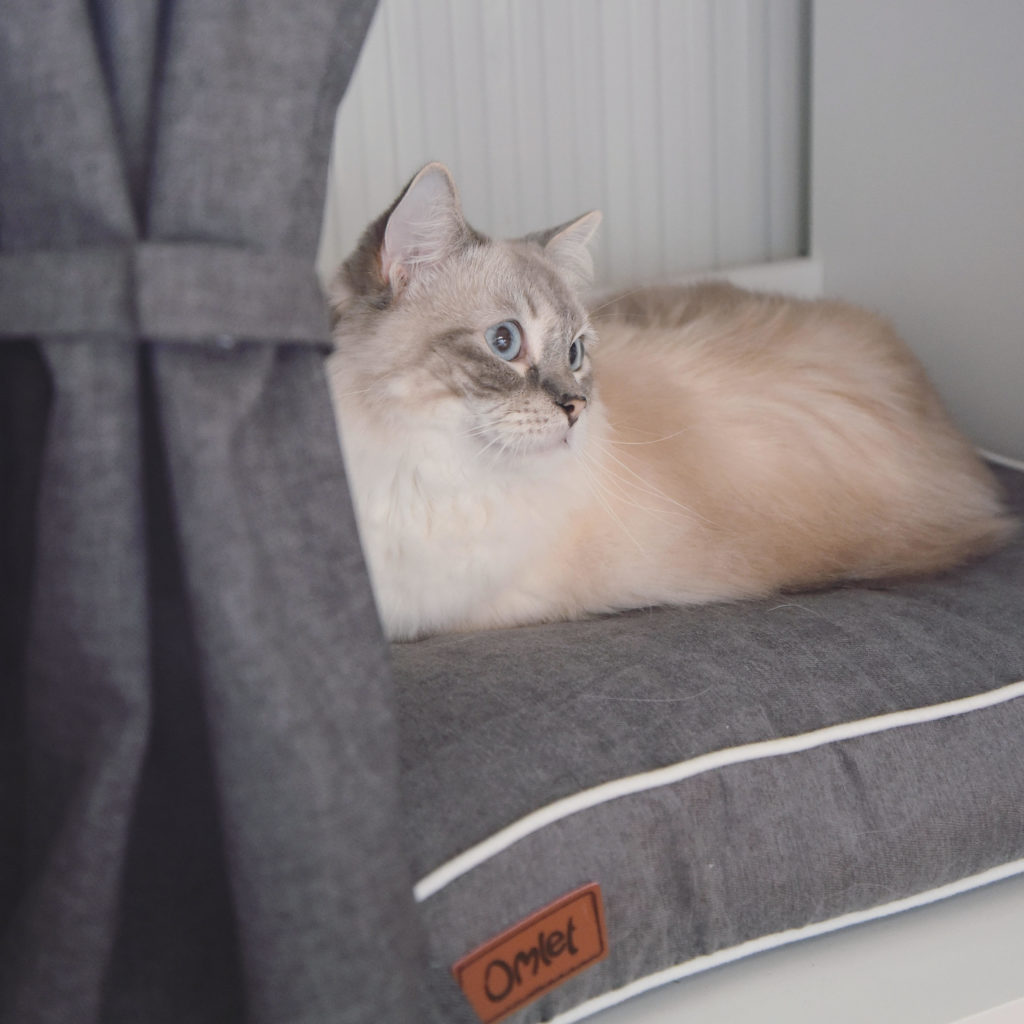 Some cats would rather have an early night on a warm sofa than a long night out on the tiles. The Persian, the Ragdoll and the Russian Blue, for example, all view the world beyond the window as a hazard rather than something irresistible on the other side of the cat flap.
Some cats would rather have an early night on a warm sofa than a long night out on the tiles. The Persian, the Ragdoll and the Russian Blue, for example, all view the world beyond the window as a hazard rather than something irresistible on the other side of the cat flap.
Breeds such as the hairless Sphynx and the thin-coated Cornish Rex and Devon Rex struggle at both ends of the weather scale, burning in strong sunlight and shivering in the cold.
Other breeds, such as Burmese, Korat and Siamese love being outside and will soon become stressed and destructive if forced to live behind closed doors.
Many others mix and match as the mood takes them. For example, you’ll never see an Abyssinian cat more content than when she’s curled up in a favourite armchair – until you’ve seen her rolling blissfully on the lawn.
But no matter where your feline friend sits on the Coach Potato/Great Outdoors scale, one thing they all love is warmth. For an outdoor cat in the UK this is no problem from – let’s be optimistic – the back end of March to the middle of October. But when the temperature drops and the frosty mornings bite, every cat needs somewhere to warm its paws.
An Indoor Haven
You don’t need to have the central heating blasting out to keep your cat from shivering. A cosy spot to curl up in, away from drafts, hustle and bustle, will do the trick. It could be something as simple as a box with a blanket, or a safe space under the cupboard – or even on top of it. Best of all, a tailor-made cat bed will maximise cosiness and heat retention.
Another custom-made option is the Maya Nook. This transforms your cat’s cosy corner into a piece of attractive furniture, providing snuggling space for your pets, and with curtains that keep it all nice and private. The Maya Nook also has an optional wardrobe attachment, for keeping cat food, toys and other feline bits and pieces tidied away.
Even without the heating cranked up, the enclosed nature of the Maya Nook makes it the perfect hot spot at any time of the year.
An Outdoor Haven
If you have the kind of cat who craves the outdoors no matter what the weather, and who sometimes likes to sleep rough in the garden, there are things you can do to make their life a little comfier.
A box-with-a-blanket in a shed or other outbuilding, or a covered area in a quiet corner, can all give the bare minimum of cosiness that no outdoor cat can resist. Even a little dry area under a trampoline or climbing frame can do the trick.
If you have an Omlet Cat Run, you can put a covered snoozing area in one of the corners. That keeps things snug and safe for a cat who likes being outside, but who has a tendency to disappear or wonder into danger.
If your cat still suffers the shivers in winter, you could buy a cat jacket. These can be particularly useful for hairless breeds such as the Sphynx.
Best of all, though, there is that perennial favourite warm spot that can help a cat through the longest of winters – your lap!
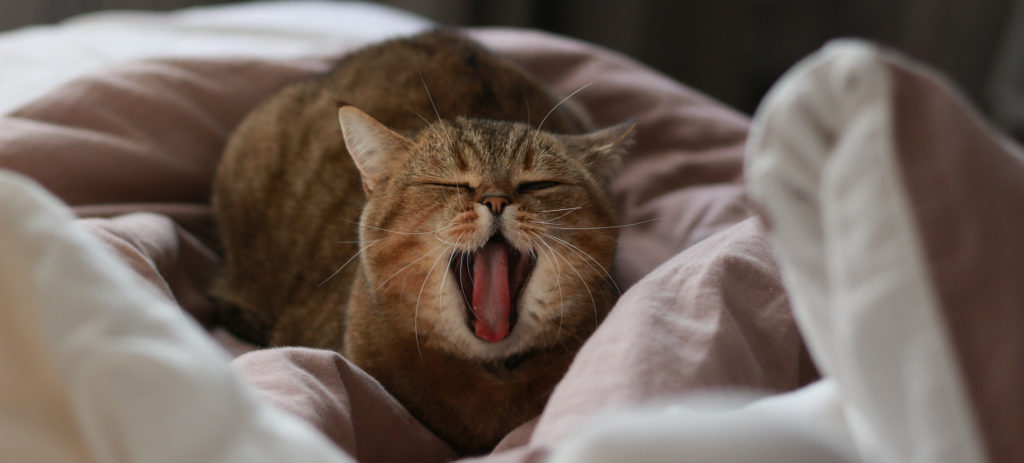
This entry was posted in Cats on November 14th, 2019 by linnearask
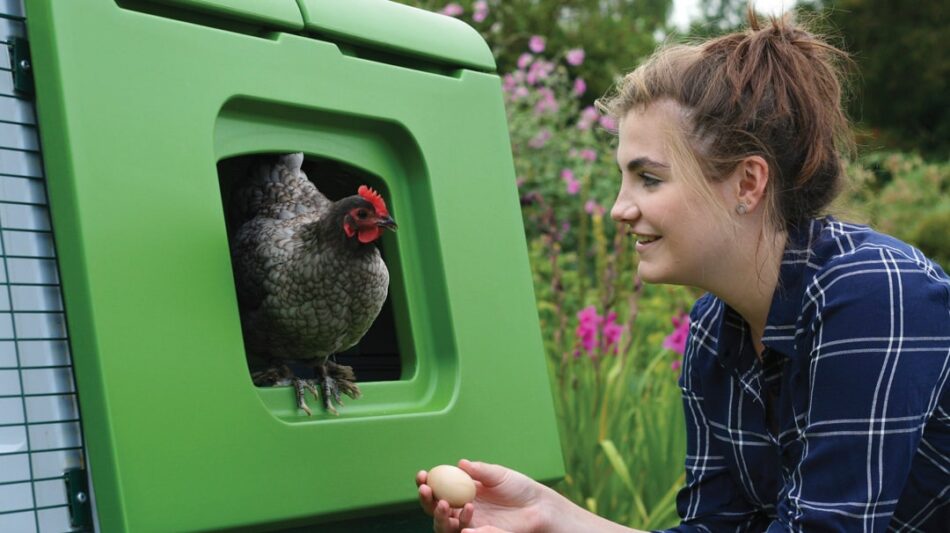
Most people decide to keep chickens because of the prospect of being supplied with fresh and delicious eggs! So, when your hens don’t deliver the goods or stop laying completely, it can be worrying, baffling, and frustrating. There are several reasons to explain this behavior, and fortunately, in many circumstances, this is no cause for concern. Here are the most common reasons as to why your chickens have stopped laying eggs:
The Age of Your Hens
When raising chickens, you’ll notice that they have a laying cycle, or how their age affects their egg production. Backyard hens typically live to around six to eight years old but will only lay eggs for a certain number of these.
Many hens will not produce eggs until they are six months old and thereabouts, but the exact timing depends on the breed. Some breeds, such as Australorps, Golden Comets, and Leghorns, begin laying early, in fact as early as between 16 and 18 weeks. Some larger breeds such as Orpingtons, Plymouth Rocks, and Wyandottes, however, could have you waiting up to eight months for their first egg to appear!
Whilst egg production will gradually decrease every year, your hens will eventually stop laying eggs approximately around the six-year mark. Again, this is dependent on the breed and some hens can stop a lot earlier or later than this.
If you’re unsure of how old your chickens are, have a read of our previous blog: How to Tell the Age of a Chicken.
Time of the Year
Another complicating factor as to why your chickens have stopped or are not laying eggs anymore, is the time of year, which is the most common answer to the “why are my hens not laying?” question.
For most breeds, hens tend to stop producing eggs, or drastically reduce their output, in the colder months. This is due to the reduced daylight hours during the winter. When summer ends, there is of course less daylight, which triggers a hormonal response in hens. For egg production, hens typically need between 12-14 hours of daylight each day and 16 for optimum egg laying, which is why they can struggle over winter. Furthermore, hens that reach egg-laying maturity in the autumn or winter may not lay again until spring.
Molting
Molting is an annual (or sometimes biannual) occurrence, whereby chickens shed their old feathers and grow new ones. The process usually lasts between 1 and 2 months and whilst it can happen at any time of the year, in the UK, this is usually in late summer or the beginning of autumn.
When chickens molt, most hens will take ‘time off’ from laying eggs with their physical efforts now concentrated on growing new feathers. During this time, you should continue to provide your chickens with a healthy diet, along with adding a bit of extra protein to their diet and ensuring they have plenty of vitamins and minerals. You can also add some apple cider vinegar to their water to help with a healthy, glossy, new plumage.
Poor Nutrition
This underlines another important point – a nutritious diet is vital all year round. Whilst it’s a great idea to help get your chickens some extra nutrients whilst they’re molting, it’s also important to provide them with what they need to keep healthy and laying eggs whatever time of year it is!
Put simply, if hens are malnourished, egg production will drop, with hens either laying fewer eggs or none at all. Whilst chickens naturally forage for food, to keep producing eggs, hens need a balanced diet of enough protein and carbohydrates. A steady supply of a good quality feed and access to grit will ensure that your chickens get everything they need.
You’ve Got a Broody Hen
Sometimes a chicken will decide to sit tight and wait for her egg to hatch. This is known as a broody hen, and while she’s broody, she’ll stop producing eggs. This is handy if you want to hatch chicks, as the hen will happily sit there for the three weeks it takes to hatch an egg. It’s less handy if you want her to produce more eggs, though!
A hen can either be left for three weeks, after which she will resume normal service. Alternatively, you can gently discourage her, should your hen be nesting in an unsuitable environment (or if you find yourself in dire need of eggs!). Breaking a broody hen can be difficult but placing a bag of ice cubes or frozen peas underneath her can do the trick. Some chicken keepers also recommend placing the hen in a wire cage or dog crate with food and water for a few days. This can be a little uncomfortable but will usually break the brooding habit.
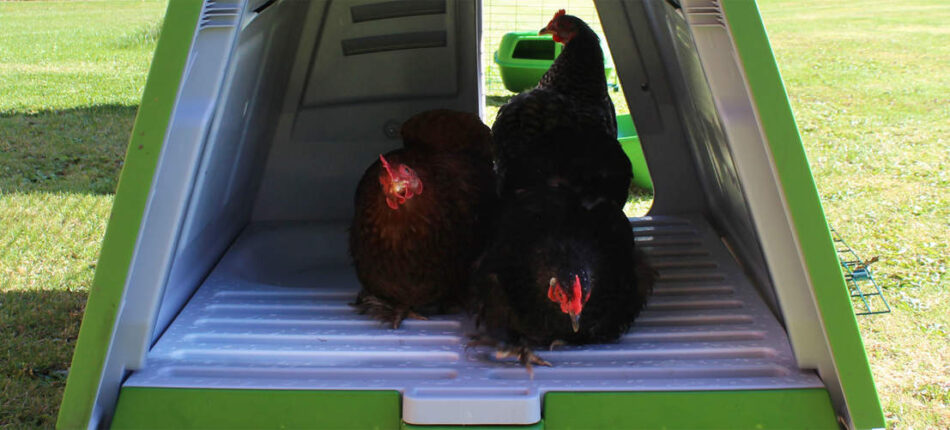 Sick Chickens Stop Laying Eggs
Sick Chickens Stop Laying Eggs
If your chicken stops laying eggs and you have ruled out that your hen is neither too young nor too old, not molting, not brooding, and not hunkering down for a cold winter, then the reason for the drop in eggs could be illness. In particular, parasites such as lice, mites, fleas, and internal worms can be causing bodily stress, which has a significant impact on laying. For a bit more information on illness in chickens, check out our pages on chicken health for advice on diagnosing and – where possible – treating problems.
As well as illness being a cause of stress, it can also be brought on by other factors such as bullying, too much handling, injury, noisy children and pets in the garden, or a poor environment. Making sure the hens have a space where they can stay happy and healthy is vital. A setup such as the Eglu chicken coop and run, along with suitable perches, feeders and other essential accessories can help with this.
Something Else to Consider…
It’s also very possible that your hens are in fact laying eggs, but they’re going missing before you even have the chance to collect them! However, rest assured, the mystery behind ‘vanishing eggs’ can usually be explained with two main reasons.
The first of which is that free-ranging chickens often ‘go native’ and begin laying eggs in a spot in the undergrowth, rather than in the coop. You should check under shrubs, in long grass, and any secluded corner of your plot of land. If the AWOL laying has been going on for a long time, there may be a few eggs out there in the wilderness. Check their freshness by placing them in a bowl of water. If the eggs lie on their sides, they are fresh. If they are more upright (between 45 and 90 degrees), but still resting on the bottom of the bowl, they are not fresh, but still usable. Any that float have passed their sell-by date!
Eggs may also disappear if a hen acquires a taste for them. Egg-eating amongst chickens can be a sign of overcrowding or poor diet. Once she has acquired the taste, it can be difficult to stop a hen from eating eggs, and she may need isolating to stop her pecking at her Neighbours’ eggs. The isolation may also induce slight stress, just enough to interrupt her own laying, which may, in turn, break the habit.
Normal Egg Service Resumed
Don’t worry – unless a hen is very old or very ill, her egg-laying should soon resume. Owners can aid the process by making sure they’re giving the birds everything they need. The key to a good egg supply is good food, a good space – and patience!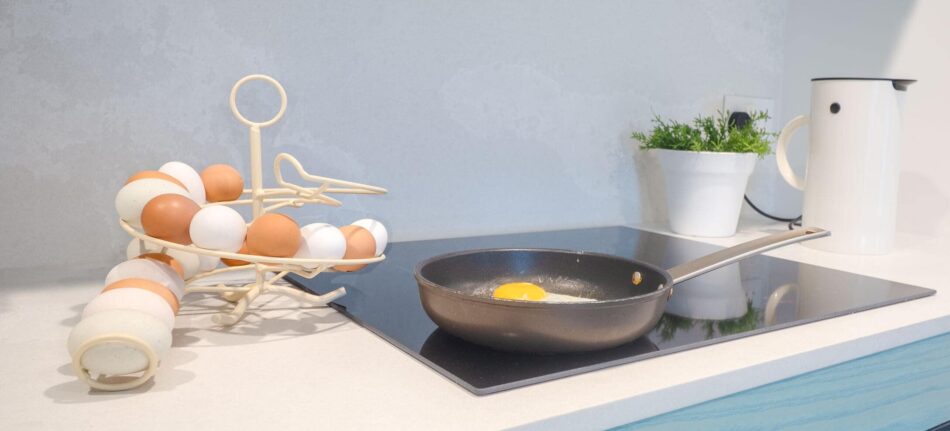
This entry was posted in Chickens on November 14th, 2019 by linnearask
 Some cats would rather have an early night on a warm sofa than a long night out on the tiles. The Persian, the Ragdoll and the Russian Blue, for example, all view the world beyond the window as a hazard rather than something irresistible on the other side of the cat flap.
Some cats would rather have an early night on a warm sofa than a long night out on the tiles. The Persian, the Ragdoll and the Russian Blue, for example, all view the world beyond the window as a hazard rather than something irresistible on the other side of the cat flap.


